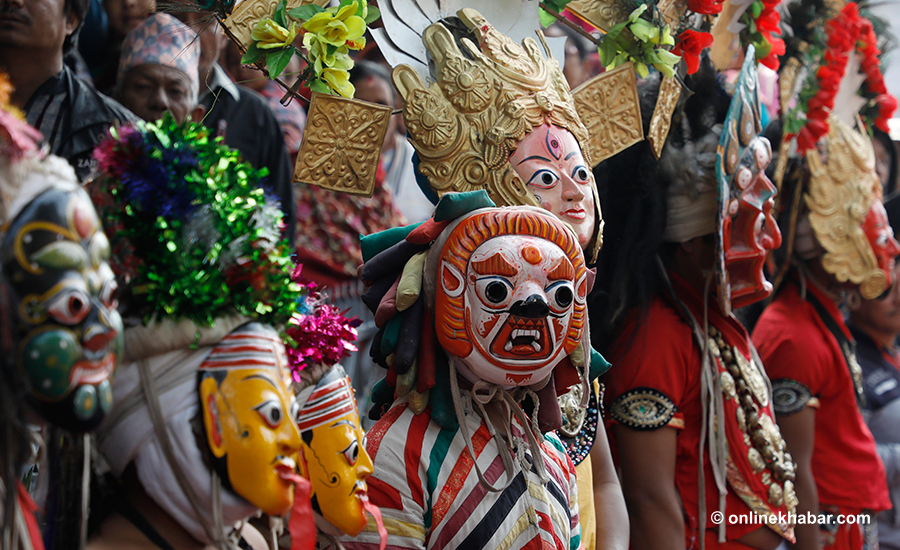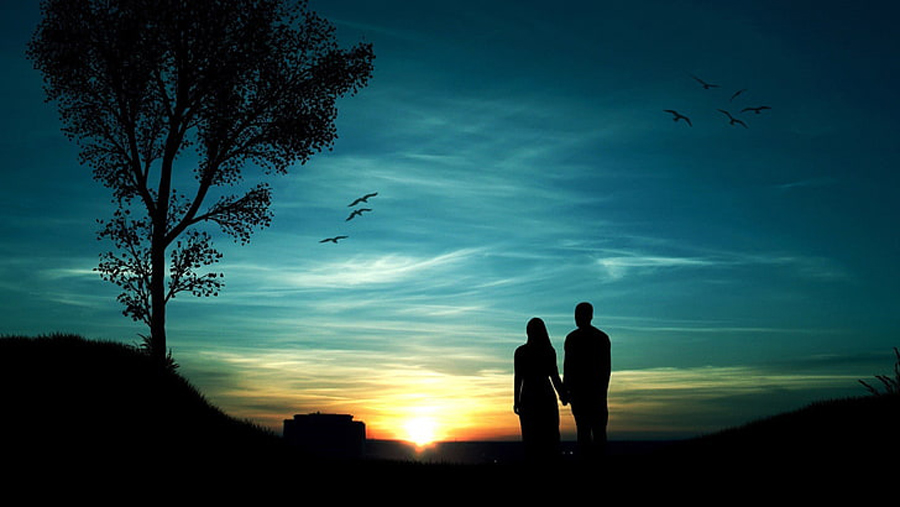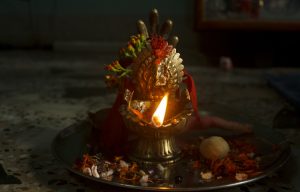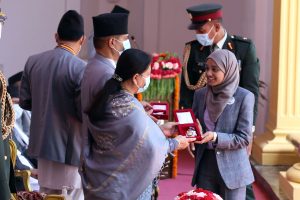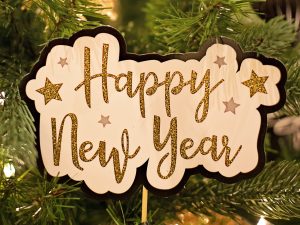A new year is the mark of a new beginning. It is the start of new dawn among the 365 days of a calendar.
You might think there is just one new year around the world. But, in Nepal, a small multicultural country, only, there are several new years as there are different people, communities and beliefs. Different communities follow their separate calendar systems that indicate their own traditional/local new year, unique from others. On these days, people from their respective communities decorate their houses, spend time with their loved ones, take delicious feasts and celebrate and enjoy their culture and traditions. It is also the time to reflect on one’s past mistakes and plan for upcoming days.
Below are some of the new years celebrated by different communities in Nepal. They are arranged chronologically as per the dates they fall next time (given in the brackets):
1. Nhu Dan (November 5, 2021)

Nhu Dan is what the Newa community, consisting of indigenous inhabitants of the Kathmandu valley, calls its new year. The community follows a lunar calendar system referred to as Nepa(l) Sambat, which came to use, all thanks to Shankhadhar Sakhwa after he released the people from their debts. It marks the beginning of a new era, and to commemorate that day, the people of the community celebrate Nepal Sambat. The celebration also includes Mha Puja, the worship of the self, and it coincides with the fourth day of Tihar, the festival of lights, flowers and sweets.
On this day, most of the Newa people wear their traditional attire for a cultural procession/rally. They worship their local gods as the indication of a new dawn and hope for good luck, fortune, and more ecstasy in their day-to-day lives.
2. Tamu Lhosar (December 30, 2021)

Every year in the Nepali month of Poush (December), people from the Gurung community celebrate Tamu Lhosar/ their new year with respect to their own calendar system called Tamu Sambit with great enthusiasm. This festival marks the end of winter and the start of spring. The celebration includes feasts, getting together, and enjoyment just before the next workload.
Every Lhosar, they bid farewell to the existing year and welcome a new one. Lhosar has become their means of reuniting with all their family and friends. In the morning, they visit gumbas for the prayers to receive blessings for prosperity and happiness. In various cities, recently, they have established community buildings with respect to their past villages known as samaj ghars. So, in their traditional attire, they visit their samaj ghar to celebrate Lhosar. Delicious Food and their traditional dance are a huge part of their celebration.
3. English New Year (January 1, 2022)

The first of January is the only time of the year when the whole world has the feeling of a new beginning on the same day. The date was chosen by Julius Caesar with respect to the Roman God of beginnings, Janus. Therefore, Romans celebrated this day by offering sacrifices to Janus and sharing gifts with one another in ancient times.
It is said to be the end of all past misery and the beginning of a new story. Many people who are conscious about their life tend to stay alone, analyse themselves, work on their past mistakes and create a new year resolution for a better future. And, there are some people whose day is filled with shopping, celebrations, feasts, parties, friends and family gatherings.
4. Maghi (January 15, 2022)
The first day of the Magh month as per the Nepali calendar is commonly known as the Maghe Sankranti or Maghi festival for many communities. Mainly, people from the Tharu, Magar and Kirant communities celebrate this day as their new year.
Tharu

Maghi is an auspicious festival of the Tharu people. It is their largest harvest festival. On this day, their local village leader and elders are appointed for the better functioning of their locality. Maghi falls around mid-January every year.
Tharus take bath early in the morning and pray for prosperity and their well-being. Then, they wear Tharu dresses, eat and drink their local traditional cuisines and perform their traditional dances, rituals. Meanwhile, the Tharu people living in Kathmandu wear their cultural dress, eat their traditional cuisines and gather at Tundikhel for Shakiya Naach, a special traditional dance, the display of grandeur, and fervour.
Magar
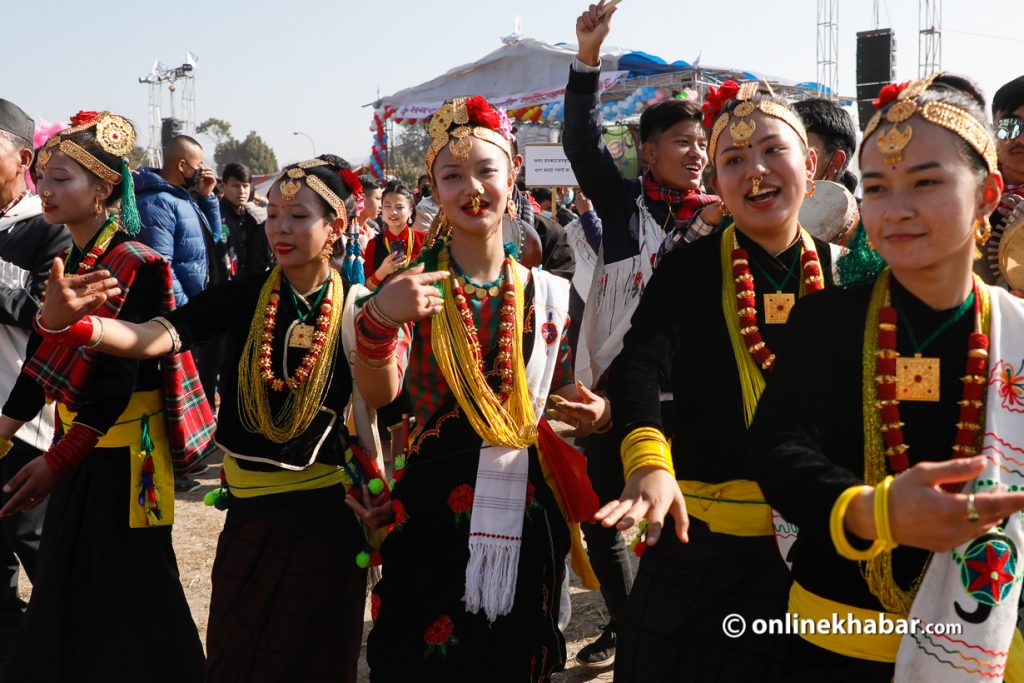
People of the Magar community mark Maghe Sankranti as the transition from winter to spring. According to the Naagchi Sambat calendar system, this day is celebrated as their new year, when they organise various programmes and festivals showcasing their culture, tradition in different places of Nepal including Kathmandu.
They invite their married daughters and their families for festive activities and also worship them. They enjoy their delicious cuisine filled with yam, sel roti, sweet potato, sesame laddus, and many more.
Kirant

People belonging to the Kirant community such as Rai, Limbu, Sunuwar celebrate their new year on the day of Maghe Sankranti as the first day of the Yele Sambat calendar system. From this day, the Kirant people end their Udhauli and begin their Ubhauli, meaning they begin their downward migration for six months to be safe from the harsh winter.
On this day, Kirant people eat different dishes of yams. Ban tarul, a species of yam, is related to their Kirant Mundhum, their greatest religious scripture. In the past, during the scarcity of grains and foods, ban tarul kept them alive. So, in the morning of the first day of Magh/ Maghe Sankranti, they put the tika made from ban tarul in the tap from where they take the shower from. Also, they put their traditional attire on with some traditional dance and eat lots of delicious foods.
5. Sonam Lhosar (February 12, 2022)

On Magh Shukla Pratipada as per the lunar calendar, people of the Tamang community celebrate Sonam Lhosar. Here, ‘Sonam’ denotes agriculture, ‘Lho’ refers to year/age and ‘Sar’ refers to new. Finally, the Tamang word, Lhosar denotes New Year whereas Sonam Lhosar means the harvest festival. They follow the ancient Tibetan/Chinese lunar calendar, so Sonam Lhosar falls on different dates from January to February in the English Calendar every year.
In the present time, the day before Lhosar is the time to clean and maintain a welcoming atmosphere for good fortune, happiness, and prosperity from the start of the new year. For the celebration of Lhosar, some people go to monasteries, stupas, and chaityas to perform ceremonial rituals. At the monasteries, there is a traditional, special ritual with a mask dance, aimed to remove negative forces.
In Kathmandu, people get new clothes, wear their traditional attires, and gather at Tundikhel to celebrate Sonam Lhosar, where musical programmes are performed with Tamang Selo in the beat of damphu, a traditional musical instrument. They eat delicious feasts made from pigs, ducks, chicken and end it with sweet desserts.
6. Gyalpo Lhosar (March 3, 2022)
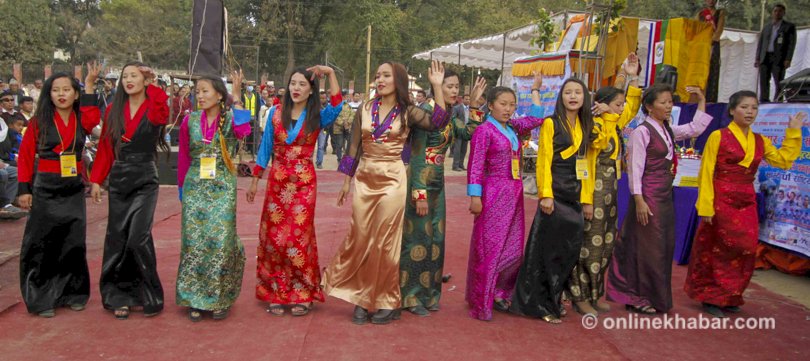
The new year of the Sherpa people (or the people mainly influenced by the Tibetan culture) is referred to as Gyalpo Lhosar. This Lhosar falls on Phalgun Shukla Pratipada as per the lunar calendar, and it is also known as Tibetan New Year. It is believed that during the period of Tibetan King Pude Gungyal, the incense-burning custom of the Bon religion was merged with the harvest festival to form their Lhosar festival.
The preparation of Lhosar begins with the creation of a unique Sherpa snack named Khapse. The two days before Lhosar, all the members of the Sherpa community gather and enjoy a special soup named Gutung which is made from the combination of nine different kinds of beans. One day before the Lhosar, they clean and decorate their houses. Finally, when the clock hits midnight, they exchange their traditional greeting “Tashi Delek” among family and friends, welcoming each other to the new year. And in the early morning, most of the people change the dhoja/prayer flags in their homes which symbolises a fresh new start.
People enjoy their day by singing, dancing to traditional Sherpa songs, eating and drinking delicious Sherpa cuisines. At local monasteries, various traditional dances representing the struggle between demons and gods are shown. People chant mantras and pass fire torches among them in the crowd.
7. Nepali New Year (April 14, 2022)
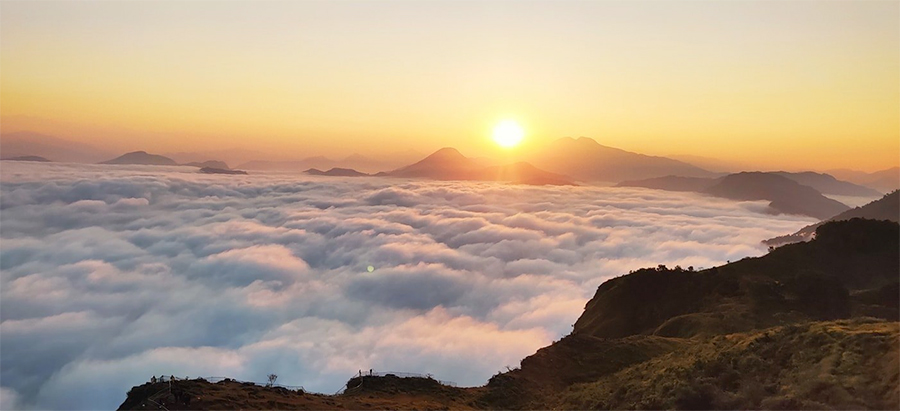
Navavarsha, the new year of all the Nepali people, falls on the first of the Baisakh month in the Bikram Sambat calendar system. It normally falls on the second week of April.
This day is celebrated with family gatherings, parties, parades/ rallies, and delicious feasts. Many young people are actively involved in street performances like dramas, parades, and dances whereas some local people visit temples, monasteries and offer their prayers and offer puja for their devoted god wishing for happiness and prosperity.



